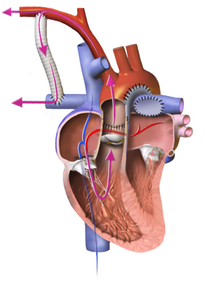Understanding the Glenn Procedure: A Surgical Treatment for Complex Heart Conditions
Understanding the Purpose and Benefits of the Glenn Procedure
The Glenn procedure is a surgical intervention designed to manage complex heart conditions, particularly those involving inadequate oxygenation. It is commonly performed on pediatric patients born with certain congenital heart defects, such as hypoplastic left heart syndrome (HLHS), pulmonary atresia, or tricuspid atresia. This procedure aims to redirect blood flow in the heart to optimize oxygenation and enhance overall cardiac function.
What is the Glenn Procedure?
The Glenn procedure, also known as the superior cavopulmonary anastomosis, is a surgical technique that creates a direct connection between the superior vena cava (SVC) and the pulmonary artery. By bypassing the right side of the heart, this procedure allows oxygen-depleted blood from the upper body to flow directly to the lungs. Consequently, the heart's workload is reduced, improving oxygenation and relieving symptoms associated with complex heart conditions.

Benefits of the Glenn Procedure
Enhanced Oxygenation: The Glenn procedure improves the oxygen saturation of blood by diverting it directly to the lungs. This allows the body to receive oxygen-rich blood, alleviating symptoms such as cyanosis (bluish discoloration) and improving overall oxygen delivery to vital organs.
Reduced Cardiac Workload: By bypassing the right ventricle, the Glenn procedure decreases the workload on the heart. This can be especially beneficial for patients with hypoplastic ventricles or other abnormalities that impair the heart's ability to pump blood effectively.
Improved Quality of Life: Following the Glenn procedure, many patients experience improved exercise tolerance, decreased fatigue, and enhanced overall well-being. The procedure enables a better quality of life by mitigating symptoms associated with complex heart conditions.
Conditions Treated by the Glenn Procedure
The Glenn procedure is primarily performed in patients with the following complex heart conditions:
Hypoplastic Left Heart Syndrome (HLHS): This condition involves underdevelopment of the left side of the heart, requiring surgical interventions like the Glenn procedure to optimize blood flow.
Pulmonary Atresia: In pulmonary atresia, the pulmonary valve fails to develop properly, impeding blood flow to the lungs. The Glenn procedure helps reroute blood to ensure adequate oxygenation.
Tricuspid Atresia: Tricuspid atresia is a condition where the tricuspid valve, which regulates blood flow between the right atrium and right ventricle, is absent or abnormally developed. The Glenn procedure aids in directing blood flow to the lungs despite the valve abnormality.
Conclusion
The Glenn procedure is a valuable surgical technique used to manage complex heart conditions in both infants and older children. By optimizing oxygenation, reducing the cardiac workload, and enhancing the quality of life for patients, this procedure has proven to be a significant advancement in the field of pediatric cardiac surgery. Through the Glenn procedure, medical professionals can offer hope and improved outcomes to individuals with complex congenital heart defects, ensuring a brighter future for those in need.
We are associated with experienced and highly skilled medical professionals. We use the latest medical technology available in the world and we provide medical services in collaboration with JCI & NABH Certified hospitals only. Our services include various types of treatment and organ restructuring and transplant.
